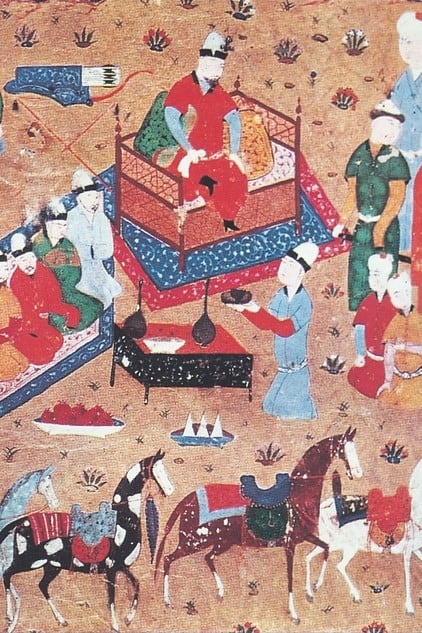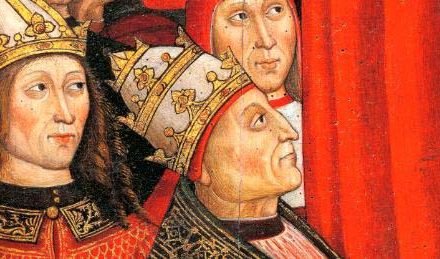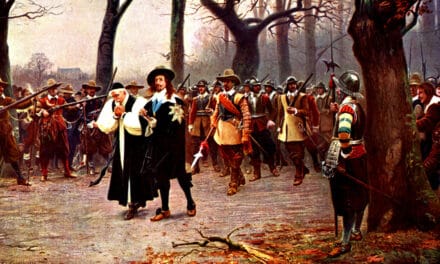This is Episode 5 in the on-going saga of Rabban Sauma.
We left Markos and Bar Sauma headed to Tabriz, the Mongol Ilkhan’s capital in Persia.
By way of recap, “Ilkhan” means “under-khan.”
The Mongol realms of the late 13th C were fractured and divided up into warring camps. The Ilkhans of Persia owed allegiance to the Great Khan, Khubilai, whose capital in China would eventually be known as Beijing. Lying between the Ilkhante in Persia and the realm of Khubilai was a Central Asian breakaway region ruled by Khubilai’s estranged Cousin, Khaidu. This was called the Chagatai Khanate.
To the north of the Ilkhans in Persia over a much-contested border, was the Mongol Golden Horde, AKA the Kipchak Khanate.
The Ilkhan had moved their capital from Maragha to Tabriz to keep a large force near that contentious border with the Horde. It was the plateau of Azerbaijan with it’s rich pastures that was contested. The Mongol mounts that had made their conquests possible needed those pastures, which became increasingly rare the further west they drove.
Though Tabriz would eventually grow into a major center of trade, when Sauma & Markos arrived it was already thriving, with European merchants well-established in the city. Its religious mix included both a Dominican and two Franciscan monasteries. The churches of Tabriz represented quite a mix. There were Byzantine, Armenian, Georgian, Nestorian and Jacobite congregations. During times of doctrinal de-emphasis, the Jacobite and Nestorian churches often lined up to share a Patriarch. Then, when doctrinal nuance regarding the person of Christ returned to the fore, the groups split apart once more.
But it wasn’t just the Christians that were represented by different groups in Tabriz. It was also a meeting place of various Muslim groups and sects. Because of the famed Mongol policy of religious tolerance, all these various groups lived side by side in a mostly amicable relationship. Combined with a rich East-West trade network, it all made Tabriz a genuinely cosmopolitan city and served as a fit setting for the two monks to meet the Mongol Ilkhan, Abakha. Presented with credentials from both The Great Khan, Khubilai and the Nestorian Patriarch, Abakha demonstrated his quick apprehension of the gravity of his visitors’ journey by immediately granting their request to endorse Mar Denha’s appointment as Catholicus. He then gave his officials strict orders to assist Bar Sauma and Markos on the last leg of their journey to Jerusalem.
With little delay, the two commenced their journey West to Ani on the Araxes River in Armenia. Ani was known as the city of “a thousand and one churches.” The Ani Cathedral was designed by the same 10th Century architect who redesigned Constantinople’s Hagia Sophia.
Leaving Ani and its gorgeously designed and decorated churches, they headed toward the Black Sea where they hoped to catch a ship headed to the Palestinian coast. But the report of robbers, the Golden Horde and their Mamluk allies who controlled Palestine combined to convince the monks that the way forward was closed.
By late 1280, they were back in Maragha, the previous capital of the Ilkhanate and home to the recently confirmed Nestorian Catholicus, Mar Denha, He was pleased with their return. Their presence afforded him more opportunity to work his schemes. He agreed with the assessment of their Armenian hosts that the way to Jerusalem was closed, insinuating that that is what he’d tried to tell them previously when he’d done no such thing. He suggested they instead defer their desire to visit the holy relics of the Holy Land to the several relics he oversaw. Thinking to accrue to himself some of the august spiritual mojo surrounding the two Eastern visitors, Mar Denha promoted Markos to a Rabban, a Master, and declared his intent to install him as the Metropolitan of all East Asia. Sauma was also promoted to the rank of a Rabban and made Visitor-General in China, a kind of Papal ambassador, except for the Nestorian Patriarch rather than the Pope. By these appointments, which due to Markos’ & Sauma’s popularity were sure to pass, Mar Denha hoped to secure his grip over Nestorian affairs far & wide. He’d be installing one of his own as Bishop over the vast area of East Asia in Marko’s See, and would have a voice and ear in the councils of the Great Khan Khubilai.
A little background on the power and scope of the Nestorian Catholicus’s authority would be helpful here. The Catholicus of the Nestorian Church, AKA, The Church of the East, was equivalent to the Byzantine Patriarch and Roman Pope in terms of authority as sole head over the Church. The Catholicus bore both spiritual & secular power. Besides steering the Nestorian ship, he was responsible for overseeing the purity of doctrine and appointing all other church officials. He weighed in on secular matters as well, giving guidance and counsel to the civil ruler as the overseer of a large number of the ruler’s subjects.
Mar Denha had risen to power as Catholicus more by political machination than spiritual devotion. He elevated Markos and Sauma because his previous movements in China had been disastrous and he hoped to re-secure his base. The previous Metropolitan he’d appointed had promptly denounced him as a fraud. So Denha revoked his appointment and had him sequestered in an out of the way monastery, from which he escaped. Recaptured and returned, he and four of his supporters were soon found dead in their cells. The ensuing scandal threatened to see the Nestorian church black-listed in the Far East. Denha hoped the elevation and appointment of the now famous Chinese monks would return his patriarchy to favor in the Court of the Great Khan.
Abraham Lincoln said, “Nearly all men can stand adversity, but if you want to test a man’s character, give him power.” The newly minted Rabbans Sauma and Markos were offered immense power and influence. They’d left home humble monks. They could return as genuine movers and shakers. Men without local peer.
They chose a different route.
If they’d had any doubts of Mar Denha’s motives before, they saw clearly now. His power had indeed outed him. So they treated him carefully. They flattered him by saying as the head of their church, his words were equivalent to Jesus’ own. Then they pointed back, reminding him of the long and arduous journey they’d recently completed. It was too soon to return home. They begged off the appointments he offered, listing their lack of training in leading the church. They were, after all, humble monks, devoted to a life of study and prayer. If it pleased the august Catholicus, they’d prefer to retire to a quiet monastery and spend their days there.
Mar Denha didn’t buy it. Not even close. His mind was made up. He made it clear he considered their objections unworthy of the faith HE’D entrusted in them. How dare they, humble monks as they claimed to be, doubt his perception of their ability! So, Rabbans Sauma & Markos were forced to yield and began preparations for their return to China.
Right then, tensions between Khubilai and Khaidu heated up. Word got back to Maragha from merchants making the trip from East to West that fresh hostilities had broken out and the routes through Central Asia were closed.
Anticipating their quick re-opening, Mar Denha pressed forward with the ceremonies attendant on the elevation of Markos and Sauma to their new posts. These ceremonies were elaborate. In Markos’ case, as a Metropolitan, he was given a new name, one reflecting the Syrian origin of the Nestorian faith. Several slips of paper with appropriate names were laid on the altar of the main church in Maragha. One was picked at random. It carried the moniker, Yaballaha = God-given. To that was added the revered title “Mar” meaning “Your.” Thus, Markos became Mar Yaballaha.
When the routes Eastward failed to open as quickly as Mar Denha had hoped and having them hang around his estate became awkward, he granted their request to head back to the monastery at Mar Michael, where they’d wanted to go all along.
February of 1281 proved an eventful month. Mar Denha died unexpectedly. It was later reported that in the few months prior to his death, several church officials had premonitions a major change was coming to their church. Markos was one of them. He made a trip to Baghdad to secure some items appropriate to his role as Metropolitan; a pastoral robe and crozier = the shepherd’s staff. ON his way back to the monastery at Mar Michael, a friend brought him news of the Catholicus’ death. Markos then went to Maragha where he wept profusely over the body.
The day after Denha’s entombment, church leaders met in Baghdad to select a new leader. The discussions didn’t take long. They asked Mar Yaballaha to become their new Catholicus. He seemed a perfect choice. His devotion to both God and church were exemplary. His motives had been proven pure. Knowing the Mongol tongue and customs, he’d be the perfect bridge between their church and rulers.
He was astonished at their selection and resisted. He didn’t know Syriac, the main language of the Nestorian Faith. He wasn’t a skilled public speaker. He wasn’t schooled in the nuances of Nestorian doctrine. He assumed surely these disqualified him. But all his resistance did was further affirm in the officials’ minds that his humility commended him as the perfect candidate. With Mar Denha’s megalomaniacal tenure fresh in their minds, Marko’s humility was a refreshing change that only served to secure his appointment.
Realizing they weren’t going to take “No” for an answer, Markos, or we must now call him, Mar Yaballaha finally consented. His first thought was, “I gotta’ tell my buddy.” So he high-tailed it back to the monastery and informed Rabban Sauma. Sauma was elated and urged the new Catholicus to immediately secure the Ilkhan Abakha’s affirmation.
The two returned to Maragha where they gathered a retinue of church officials and headed back to Tabriz. Abakha was ensconced in the nearby mountain retreat where he liked to spend the Summer. The Ilkhan was more than happy to replace the Islamophobic Mar Denha with a patriarch who held no special animosity toward Muslims. It helped to have someone connected to the Great Khan back East as well. In affirming Mar Yaballaha as the new Catholicus, he mused that Sauma and Markos’ journey to Jerusalem had been arrested, not by the Mamluks, but by God, to ensure His Church would be provided with solid leadership in the challenging times that lay ahead. Abakha wanted to make sure his approval ofMar Yaballaha was clear, so he gave him a robe fitting his office, a chair resembling a throne, a large sun-umbrella that functioned like a canopy used also by the royal family, a new, comprehensive letter-patent made of solid gold, and official conference of the great seal marking the authority of the Nestorian Catholicus. It was that seal Mar Denha had waited many years to secure from the Ilkhan, the very same seal Sauma & Markos had secured for him. Abakha now gave it confidently to Mar Yaballaha. From then on, Mar Yaballaha’s commands carried the weight of law for the Nestorian community. As a final signifier of his approval, Abakha had his administrators designate substantial funds to pay for the ceremonies that would install Markos into his new office.
The group then headed back to Baghdad and Mar Yaballaha was installed as the new Catholicus in November of 1281. Metropolitans, that is, Nestorian bishops, traveled from as far as Western Armenia, Samarkand, and Tripoli to attend the event.
So, at the age of only 36, Markos of China, a humble teenager who aspired to little more than the life of a monk in the Fang Mountains of his homeland, had risen to become THE leader of his entire denomination. And not just denomination, but one of the 3 major branches of the Christian Church and Faith – The Nestorian Church of the East!
It’s quite a story. But it’s just getting started. For his mentor’s tale has much farther to go. Everything till now has been but the preface to Rabban Sauma’s epic. Join us next time for Part 6.





